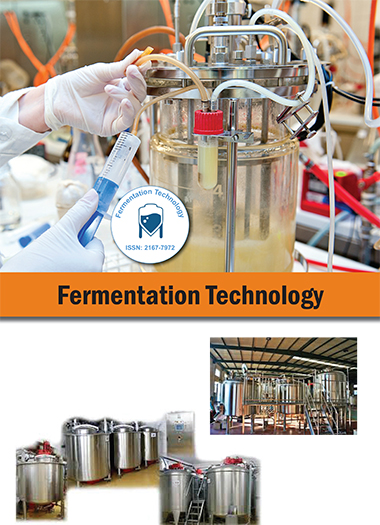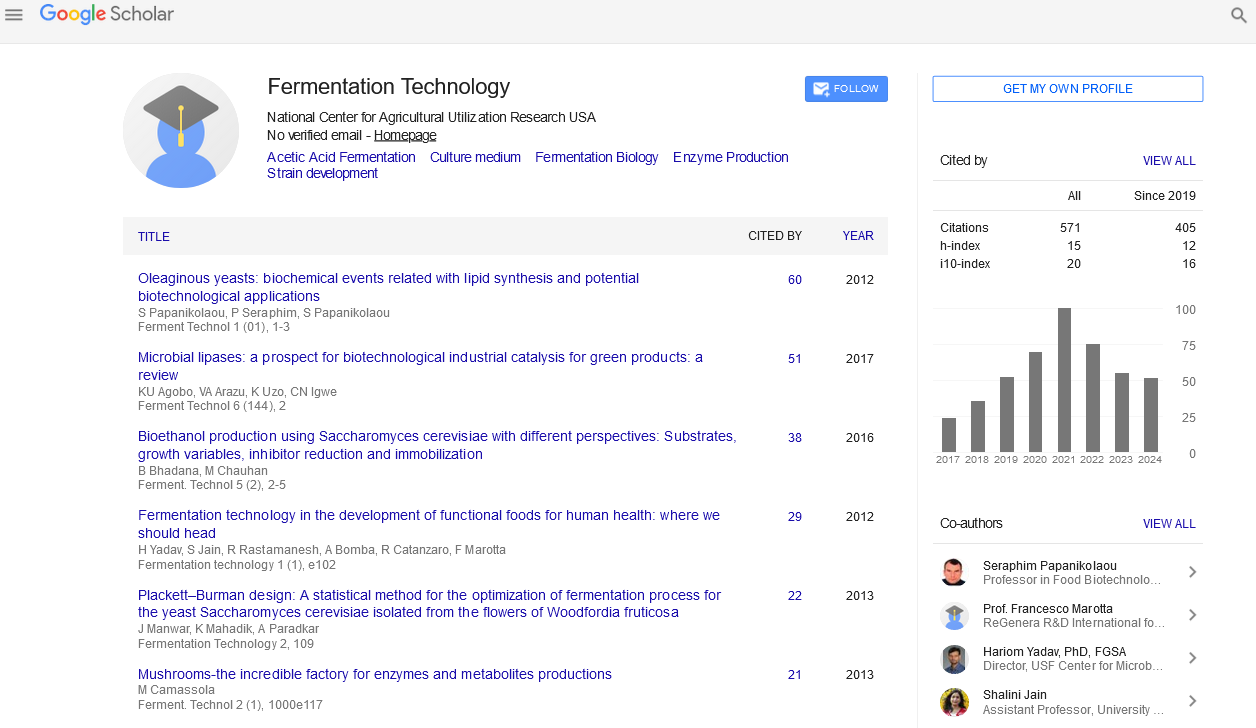Indexed In
- Open J Gate
- Genamics JournalSeek
- Access to Global Online Research in Agriculture (AGORA)
- RefSeek
- Hamdard University
- EBSCO A-Z
- OCLC- WorldCat
- Publons
Useful Links
Share This Page
Journal Flyer

Open Access Journals
- Agri and Aquaculture
- Biochemistry
- Bioinformatics & Systems Biology
- Business & Management
- Chemistry
- Clinical Sciences
- Engineering
- Food & Nutrition
- General Science
- Genetics & Molecular Biology
- Immunology & Microbiology
- Medical Sciences
- Neuroscience & Psychology
- Nursing & Health Care
- Pharmaceutical Sciences
Selection of lactic acid bacteria able to hexose and pentose fermentation
World Congress on Beneficial Microbes: Food, Pharma, Aqua & Beverages Industry
August 25-27, 2015 Valencia, Spain
Hubert Antolak, Marta Dudkiewicz, Dorota Kregiel and Joanna Berlowska
Lodz University of Technology, Poland
Posters-Accepted Abstracts: Ferment Technol
Abstract:
Lactic acid bacteria (LAB) are considered as the best studied microorganisms. Besides the ability to produce lactic acid, new development have been made in research of LAB in the area of drug resistance, bacteriocins, quorum sensing, autolysins. The main feature of the metabolism of LAB is degradation of different carbohydrates and related components primarily to lactic acid. Generally, lactic bacteria are classified into two groups: Homofermentative and heterofermentative. Representatives belonging to the first group convert glucose almost exclusively into lactic acid, while the heterofermentative LAB catabolize glucose into lactic acid as well as ethanol and carbon dioxide. Only the homofermentative LAB are available for the commercial production of lactic acid. One of the most abundant biomass sources in the world is lignocellulose which consisting of three major components: cellulose, lignin and hemicellulose. Compound included in the cellulose macromolecules is glucose, while hemicellulose structure contains xylose and arabinose pentose sugars. According to literature some LAB such as Lactobacillus pentosus, L. brevis, L.plantarum, Leuconostoclactis are known to fermentation the pentose generally considered as a unavailable for most microorganisms. In microorganism able to produce lactic acid from arabinose, the pentose is converted to xylulose-5- phosphate and further converted to lactic and acetic acids. Scope of our work included the characteristics of the environmental isolates and collection strains of Lactic Acid Bacteria on media based on selected pentose as the only source of carbon. The evaluation of the productivity of lactic acid and analysis of the use of sugars by bacteria during the culture. Selected strains characterized by the high productivity of lactic acid in the production of lactic acid from sugar beet pulp hydrolysate which are waste material in confectionery industry.
Biography :
Hubert Antolak finished his studies at the Lodz University of Technology, Faculty of Biotechnology and Food Science with engineer degree in Biotechnology in 2012. In 2013, he received Master degree in Biotechnology at Biotechnology and Food Sciences Department. In the same year, he began PhD studies at the Institute of Fermentation Technology and Microbiology, Department of Biotechnology and Food Sciences, Lodz University of Technology. He is co-author of articles in Polish Journals: Food, Science, Technology, Quality; Food Industry; Laboratory; Agro Industry; and article in BioMed Research International. He is co-author of nucleotide sequences deposited in GenBank database.
Email: hubert.antolak@gmail.com

